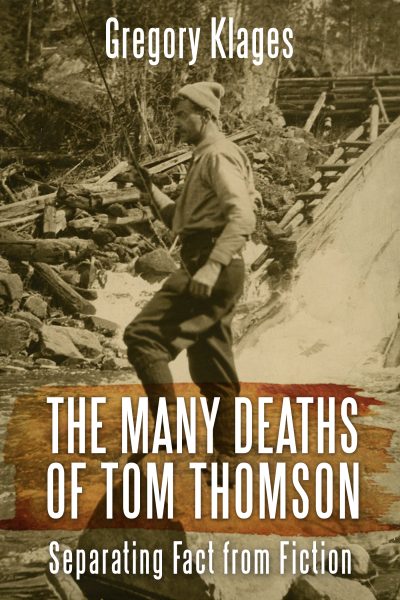What really happened on Canoe Lake nearly 100 years ago? A new book by a York University instructor about the sudden and mysterious death of Canadian icon and painter Tom Thomson untangles myths from facts and offers a refreshing perspective.
Drunken fights, lovers’ quarrels, German saboteurs and murder are part of the lore around Thomson’s death, which York U’s Gregory Klages revisits in, The Many Deaths of Tom Thomson: Separating Fact from Fiction, to be published Saturday, May 14 by Dundurn Press. The book commemorates the upcoming 100th anniversary, in 2017, of the landscape painter’s death.

The Many Deaths of Tom Thomson book cover
In researching the book, Klages delved into witness statements, archival sources, some only available in the last 15 years or so, as well as letters and photographs from the Thomson family. He also looked at documents related to a 1930s request to dig up a suspicious gravesite, and exhumation of that site in the 1950s, along with forensic reports of who was buried there and a doctor’s analysis of the state of Thomson’s body when it was first found, some of which were overlooked previously.
“It was pretty exciting to come across these materials. You never expect there will be a new document that will bring new evidence to the table,” said Klages. “When it happens, it just reopens the door to history.”
The last time someone saw Thomson alive was on July 8, 1917, the same day his empty canoe was spotted on Canoe Lake in Algonquin Park after Thomson had supposedly set off for a fishing trip. A week later his body was found floating in the lake.
“Since then, the theories about how Thomson died have become more and more fantastical, including espionage, bad blood and even suicide." Theories also sprung up about one of the gravesites that were found and thought to be Thomson’s even though forensics said it was an Aboriginal man. “It’s the mystery that just keeps on giving,” said Klages. “With the upcoming anniversary of Thomson’s death, I thought it was an ideal time to re-evaluate the renowned painter’s last few days.”

Gregory Klages. Photo by Dave Akers.
Klages’s interest in how Thomson died goes back about 10 years when he was doing his PhD at York U. He was part of a group that created a teaching resource regarding great unsolved Canadian mysteries. He supervised production of a book-length website devoted to Thomson – Death on a Painted Lake – that provided historical evidence and current theories. For the book, Klages went further.
The Many Deaths of Tom Thomson gives a glimpse of Thomson’s life, his art and his last summer in his beloved Algonquin Park, where he painted his most famous paintings. It also looks at the myths and rumours, including that he was a father, and a supposed confession, how they developed and how they stand up nearly a century later.
Klages methodically debunks most of the myths leaving only one conclusion, although he still leaves it up to the reader to make the final call. “The myths make for great story telling, but not for great history,” said Klages. “This is our own Canadian history, our own mystery to solve.”
York University is known for championing new ways of thinking that drive teaching and research excellence. Our 52,000 students receive the education they need to create big ideas that make an impact on the world. Meaningful and sometimes unexpected careers result from cross-discipline programming, innovative course design and diverse experiential learning opportunities. York students and graduates push limits, achieve goals and find solutions to the world’s most pressing social challenges, empowered by a strong community that opens minds. York U is an internationally recognized research university – our 11 faculties and 24 research centres have partnerships with 200+ leading universities worldwide.
Media Contact:
Sandra McLean, York University Media Relations, 416-736-2100 ext. 22097 / sandramc@yorku.ca

